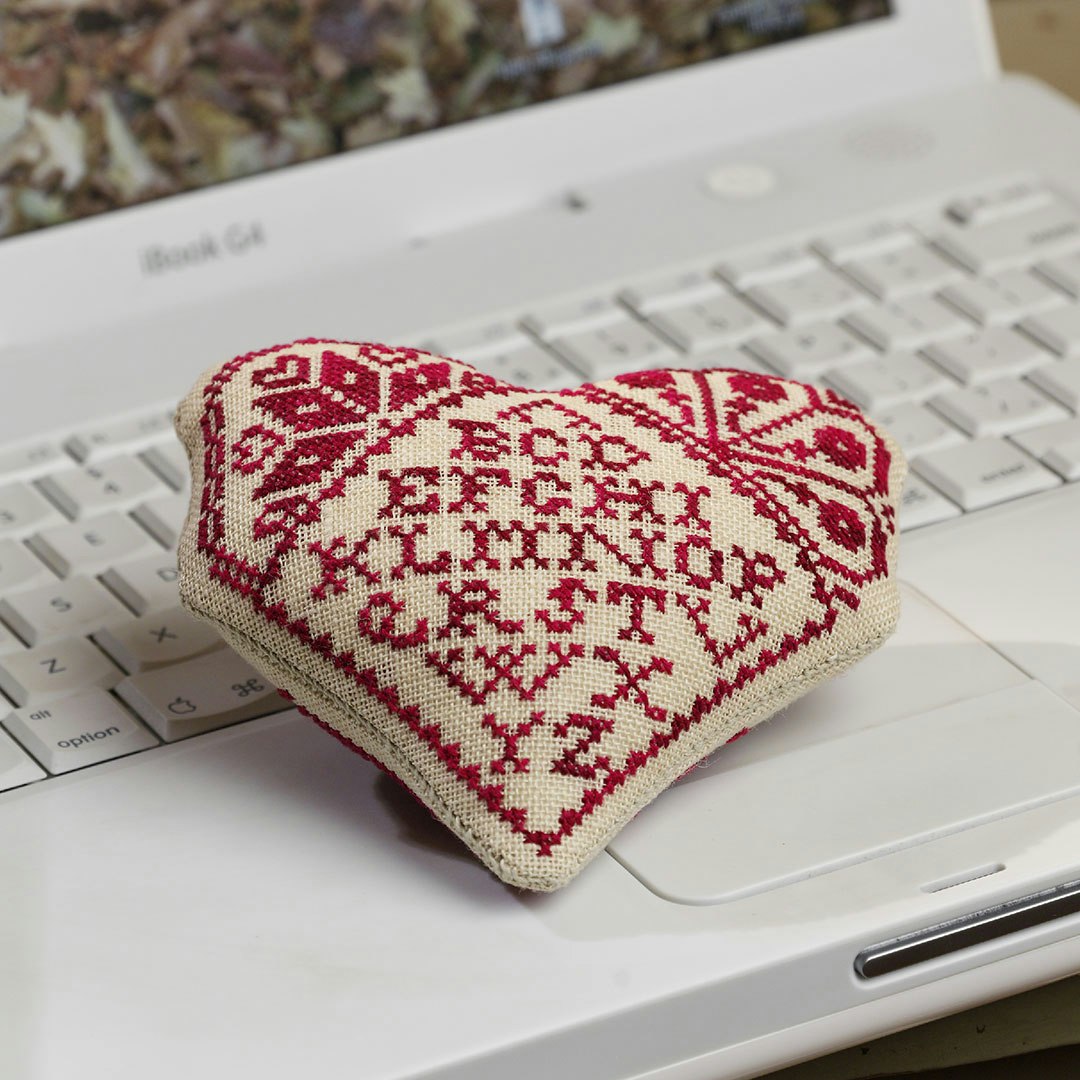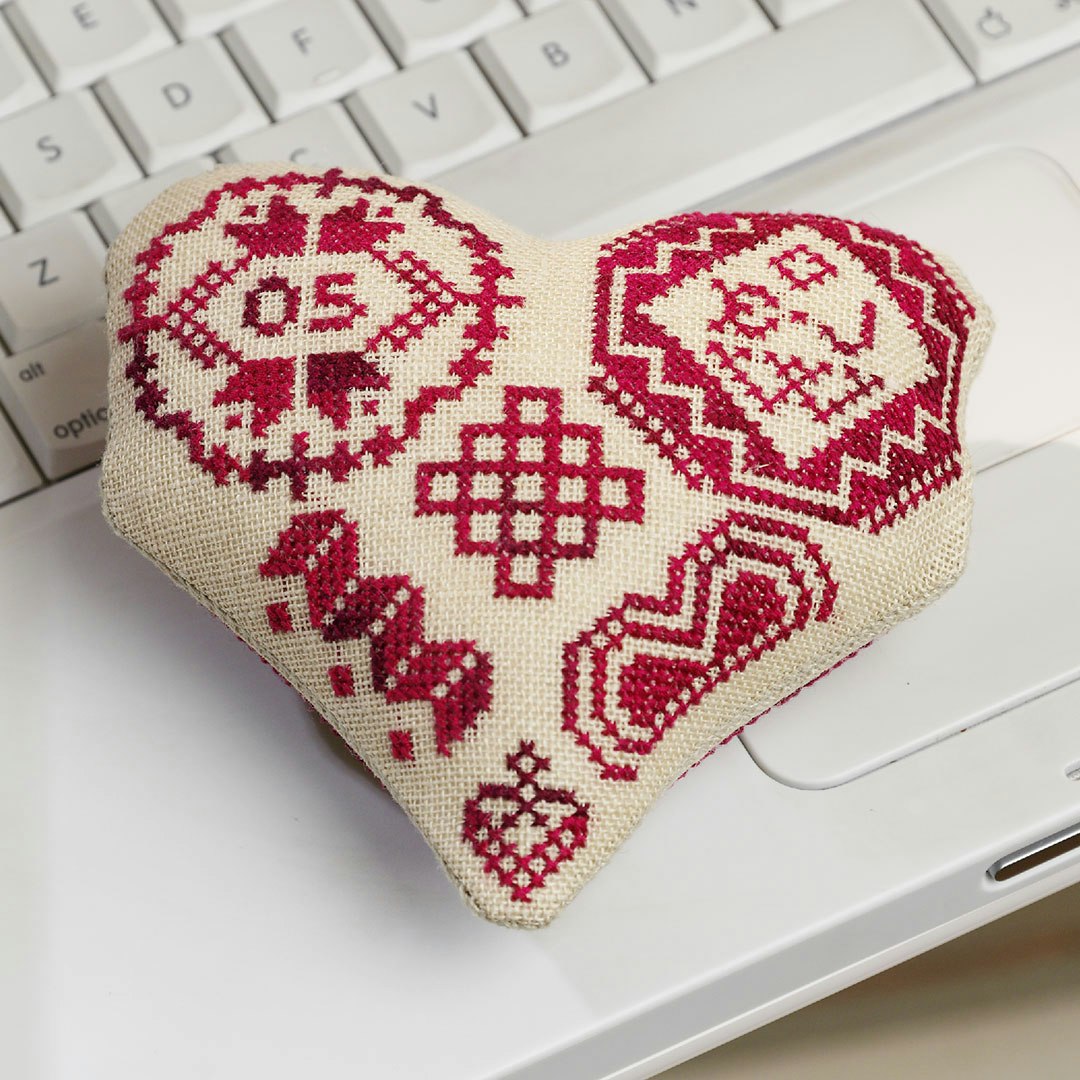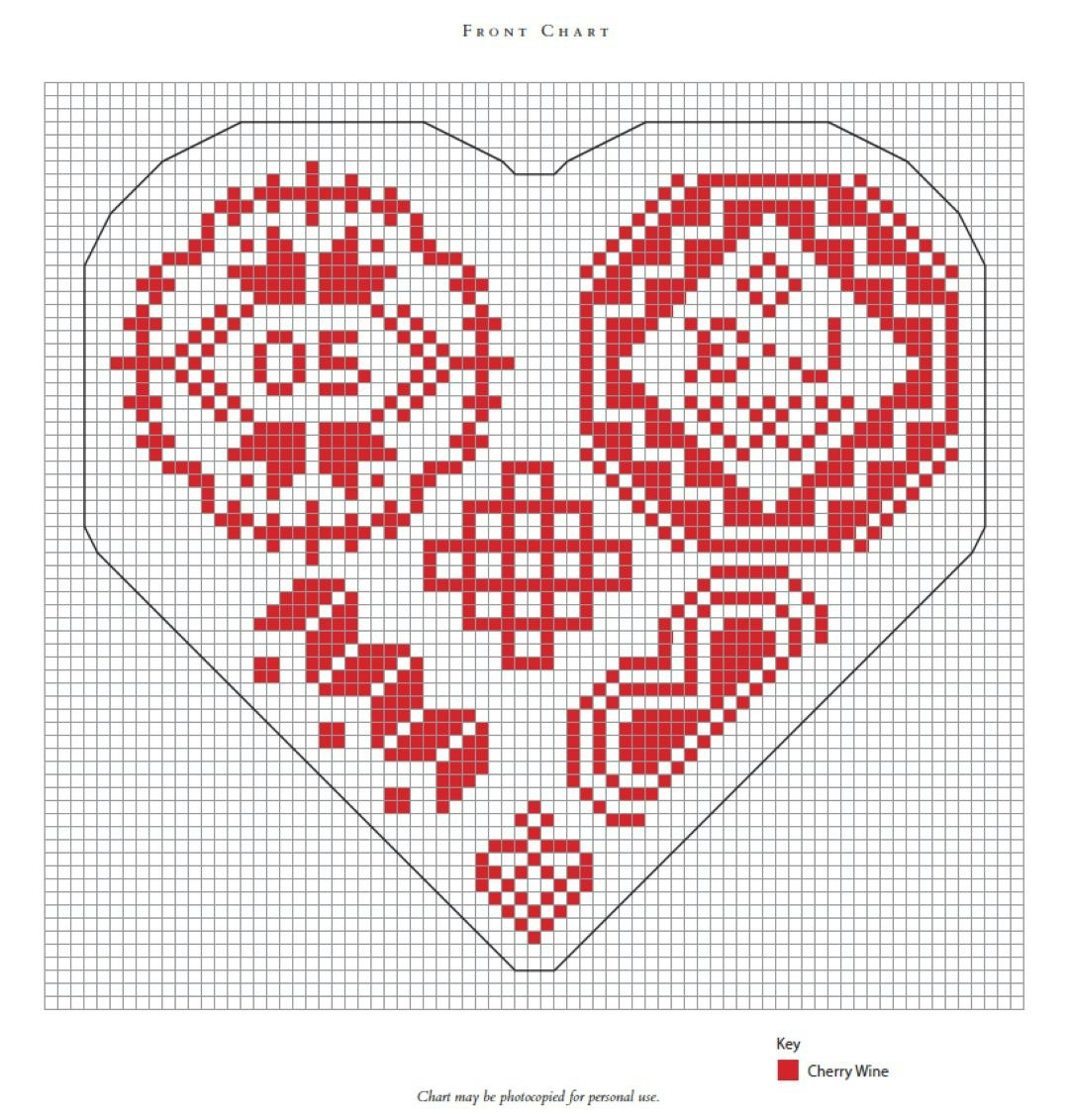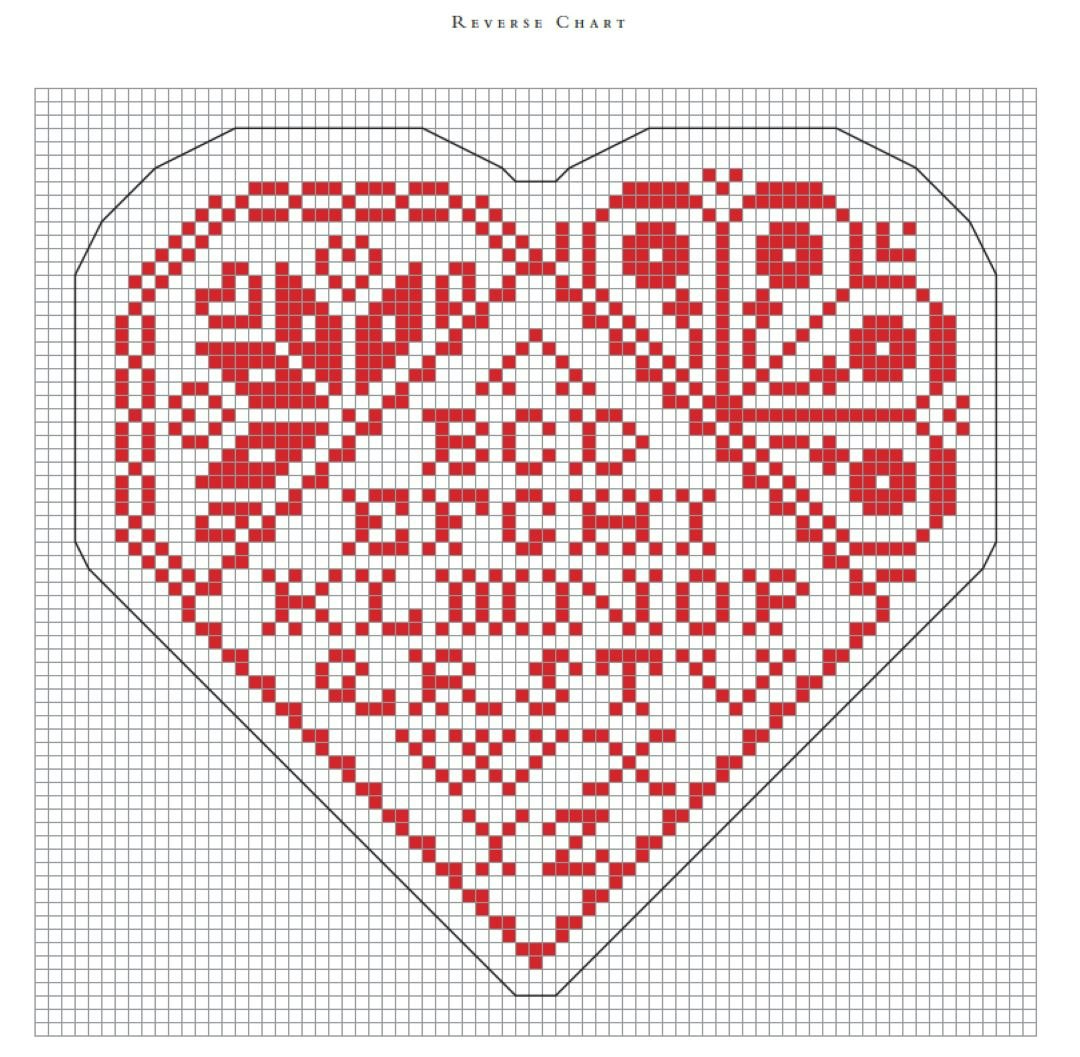Editor’s Note: It is wonderful to see projects find new life via social media. For example, we have seen these hearts popping up on Instagram. Have you stitched this piece lately? We would love to see your work and share it with others in our By Post segment. You can send in your photos here. —PieceWork Editorial Staff
Medallion samplers, with whole medallions in the center and half and quarter medallions on the borders and corners, were one of three distinct types of samplers stitched at Quaker schools in England and America during the seventeenth century. The motifs were thought to have been used to teach mathematics, and the samplers usually were stitched in monochromatic or somber colors.

The reverse of Janice Wood’s heart to cross-stitch with Quaker motifs.
This small heart pillow was designed using traditional Quaker sampler motifs and variegated cherry red thread to give it an aged appearance. A traditional sampler alphabet appears on one side with the date and recipient’s initials on the reverse side.

The front of Janice Wood’s heart to cross-stitch with Quaker motifs.
Materials
- Charles Craft Irish Linen Evenweave, 32-count 100% linen fabric, #IL-9326-2514-BX Cream, 9 x 9 inches (22.9 x 22.9 cm), 2 pieces
- The Gentle Art Sampler Threads, 100% cotton 6-strand thread, 5 yards (4.6 m)/skein, 1 skein of Cherry Wine
- DMC Pearl Cotton, 100% cotton thread, size 8, 87.5 yards (80 m)/ball, 1 ball of #644 Medium Beige Gray
- Needles, tapestry size 24 and sharps size 8
- Sewing thread, white
- Embroidery hoop, 7 inches (17.8 cm) in diameter
- Pellon fleece, white, 5 x 10 inches (12.7 x 25.4 cm), 1 piece
- Tracing paper, 5 x 5 inches (12.7 x 12.7 cm), 1 piece
- Fiberfill
Finished size: 4 x 4¼ inches (10.2 x 10.8 cm)
Instructions
Notes: Using the tapestry needle, work all cross-stitches over 2 linen threads with 2 strands of Cherry Wine; work all backstitches and whipstitches with 1 strand of #644. Use the sharps needle and sewing thread for basting.
Mount one piece of linen in the embroidery hoop. Referring to the chart, cross-stitch the front of the heart and backstitch the outline. Remove the linen from the hoop. Mount the second piece of linen in the hoop, and repeat stitching for the back of the heart. Remove the linen from the hoop. Using a very slightly damp press cloth, press each piece of linen and allow to dry thoroughly.
Make a heart-shaped pattern by placing the tracing paper on top of the fabric and drawing on top of the backstitch outline with a pencil. Using the tracing-paper pattern, cut one piece of fleece for each side of the heart. Trim an additional 1⁄8 inch (3 mm) off all sides of both pieces of fleece. To create seam allowances, trim the linen pieces of fabric so that there is 3⁄4 inch (1.9 cm) beyond the backstitched outlines. Pin the fleece to the wrong side of each heart and fold the seam allowances to the inside along the backstitched line; clip notches in the seam allowances as needed for a smooth edge. Pin down the seam allowances and baste them to the fleece, being careful not to stitch through the linen.
Lay out the linen pieces with wrong sides together. Leaving a 4-inch (10.2-cm) tail, whipstitch the front and back pieces of linen together by picking up the stitches of the backstitched outline on each piece: begin on one long edge and continue around the heart, leaving about a 2-inch (5-cm) opening and an 18-inch (46.0-cm) tail. Stuff with fiberfill to desired firmness.
Close the opening by continuing to whipstitch the backstitches together with the tail. When you reach the starting point, knot the starting and endings tails together and run them along the inside of the seams in opposite directions for at least 1 inch (2.5 cm) before clipping.


Janice Wood has been stitching since age eight and has been designing and teaching needlework for over twenty years. She especially enjoys samplers and the history of decorative arts.
Posted February 13, 2014. Updated February 2, 2021. Updated March 14, 2022.

